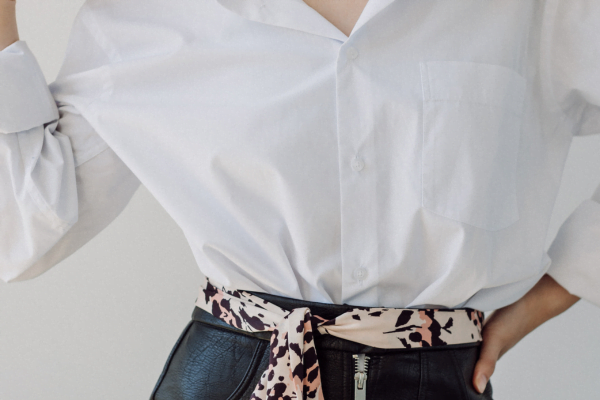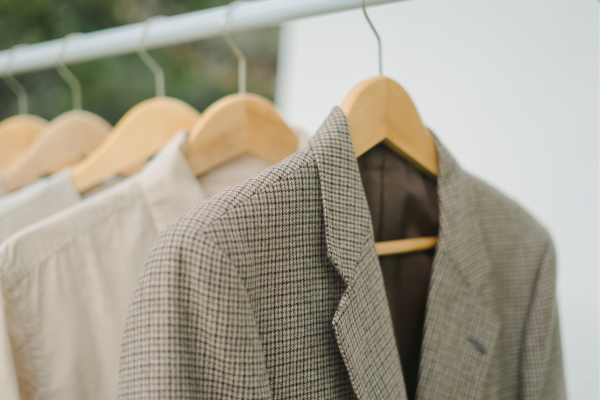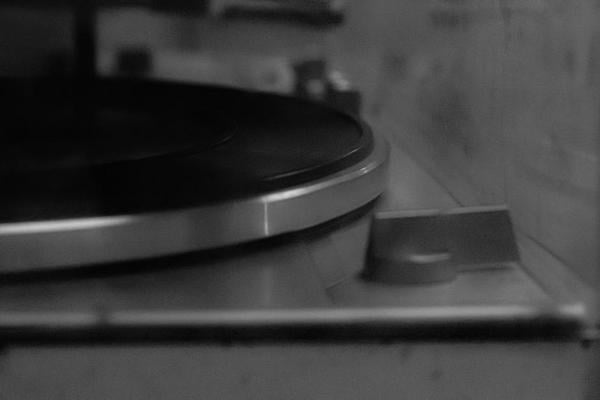I. Introduction
A. Definition of Upcycled Fashion
In today’s world, where environmental consciousness is becoming increasingly vital, the concept of upcycled fashion has emerged as a beacon of sustainability in the fashion industry. Upcycling refers to the process of transforming discarded or unused materials into new, high-quality products, breathing new life into what was once considered waste. Unlike conventional recycling, which often involves breaking down materials into lower-grade products, upcycling preserves the integrity of the original materials, resulting in unique and innovative fashion pieces.
B. Importance of Sustainable Fashion
The fashion industry has long been associated with excessive consumption and wasteful practices, contributing to environmental degradation and social issues. Sustainable fashion, on the other hand, emphasizes responsible production, ethical sourcing, and eco-friendly manufacturing processes. It addresses the harmful impact of fast fashion, which leads to an alarming amount of textile waste and environmental pollution. By embracing sustainable fashion practices, we can reduce our carbon footprint, conserve natural resources, and promote fair labor practices, fostering a more conscious and compassionate industry.
C. Purpose of the Blog
At [Blog Name], our mission is to champion the cause of sustainable upcycled fashion and inspire readers to be conscious consumers. Through informative and engaging content, we aim to shed light on the significance of upcycling in the fashion world, showcasing its potential to revolutionize the way we view clothing and accessories.
Throughout this blog, we will explore the multifaceted benefits of upcycled fashion, not only for the environment but also for local communities and artisans. We will delve into the creativity and innovation of designers who are leading the charge in the upcycling movement, bringing to the forefront awe-inspiring pieces that challenge the conventional notion of fashion.
Moreover, we believe that every individual can contribute to a sustainable future through their fashion choices. Thus, we will provide practical tips and step-by-step guides for DIY upcycling projects, empowering our readers to actively participate in the movement. Additionally, we will examine the fashion industry’s role in embracing upcycling and fostering partnerships with sustainable initiatives.
Ultimately, this blog aims to foster a community of like-minded individuals who share a passion for sustainable fashion. Together, we can embrace the “waste not, want not” philosophy and usher in a new era of conscious consumption, where style and sustainability coexist harmoniously.
Join us on this inspiring journey towards a more sustainable and fashionable future!
II. Understanding Upcycled Fashion
A. Explanation of Upcycling and its Benefits
Upcycled fashion embodies the innovative spirit of sustainable design, offering a compelling solution to combat the fashion industry’s waste woes. At its core, upcycling involves repurposing pre-existing materials, such as discarded clothing, fabrics, or even industrial waste, to create new and stylish fashion pieces.
The benefits of upcycled fashion are far-reaching and profound. Firstly, it significantly reduces the strain on landfills and minimizes the need for energy-intensive production processes. By diverting textiles and materials from becoming waste, upcycling helps to conserve precious resources, including water and raw materials.
Secondly, upcycling encourages a shift away from the throwaway culture perpetuated by fast fashion. It fosters a mindset of sustainability, prompting consumers to value quality, uniqueness, and durability over mass-produced, short-lived trends. By embracing upcycled fashion, we can extend the lifespan of clothing and reduce the demand for new, resource-intensive items.
B. Examples of Upcycled Fashion Products
The world of upcycled fashion is brimming with creativity and ingenuity, leading to a remarkable array of products that showcase the beauty of repurposed materials. From one-of-a-kind garments to accessories that tell a story, upcycled fashion offers a diverse range of choices for eco-conscious consumers.
- Upcycled Denim: Old denim jeans are transformed into chic skirts, jackets, and bags, retaining the charm of worn-in denim while breathing new life into the fabric.
- Repurposed Sari Dresses: Vintage saris find new purpose as elegant dresses, preserving the cultural heritage of the textiles and celebrating their vibrant patterns.
- Tire Inner Tube Accessories: Discarded tire inner tubes are upcycled into edgy and waterproof accessories like belts, wallets, and even statement jewelry.
- Reclaimed Fabric Patchwork: Scraps of fabric from various sources are artfully stitched together to create colorful patchwork clothing, resulting in unique and bohemian-inspired designs.
C. Comparison with Traditional Recycling and Downcycling
While upcycling is often used interchangeably with recycling, there are significant differences between the two approaches.
Traditional recycling involves breaking down materials into their base components to create new products. In the case of textiles, recycling might involve shredding old clothes into fibers to make lower-grade products like cleaning rags or insulation materials. While this process can reduce waste, it often results in a loss of quality and does not fully utilize the original item’s potential.
On the other hand, downcycling refers to recycling that produces materials of lesser quality or value compared to the original product. For instance, recycling plastic bottles into lower-grade plastic items would be considered downcycling.
In contrast, upcycling preserves the value and quality of the original materials, transforming them into new, desirable products. It celebrates the uniqueness of each item and encourages sustainable consumption by giving new life to discarded goods.
By understanding the distinctions between these processes, we can make informed choices as consumers and actively support upcycled fashion, embracing its positive impact on the environment and the fashion industry as a whole.
Stay with us as we delve deeper into the world of upcycled fashion, exploring more fascinating examples and the individuals driving this transformative movement forward.
III. Environmental Impact of Fast Fashion
A. Negative Consequences of Fast Fashion
Fast fashion, characterized by rapid production and short product lifespans, has become a dominant force in the fashion industry. While it offers inexpensive and quickly changing clothing options, its environmental impact is far from appealing. The negative consequences of fast fashion are numerous and demand our immediate attention.
- Overconsumption: Fast fashion’s business model encourages constant buying and discarding, leading to a culture of overconsumption. This creates a cycle of waste and places immense pressure on natural resources.
- Pollution and Chemical Use: The production of fast fashion involves the use of harmful chemicals, dyes, and synthetic materials that pollute waterways and contribute to air pollution. These chemicals have devastating effects on both ecosystems and human health.
- Low-Quality Garments: To keep up with the rapid pace of trends, fast fashion brands often prioritize low-cost production, resulting in poorly constructed and short-lived garments that end up as waste quickly.
- Exploitative Labor Practices: The fast fashion industry has been criticized for its exploitation of cheap labor in developing countries, where workers are subjected to unfair wages and hazardous working conditions.
B. Waste Generation and Landfill Concerns
One of the most alarming aspects of fast fashion is the sheer volume of waste it generates. As consumers discard clothing after just a few wears, landfills become flooded with textiles that can take hundreds of years to decompose fully. This waste not only takes up valuable landfill space but also releases harmful greenhouse gases, contributing to climate change.
Moreover, due to the prevalence of synthetic fabrics in fast fashion, such as polyester and nylon, these materials do not break down naturally, further exacerbating the waste crisis. The accumulation of textiles in landfills also poses environmental and health risks, as toxic substances from dyes and chemicals can leach into the soil and water, contaminating ecosystems and affecting local communities.
C. Water and Energy Consumption
The production of fast fashion consumes staggering amounts of water and energy, putting immense strain on natural resources. From growing and processing raw materials to dyeing and finishing fabrics, water plays a crucial role in every stage of garment production. Unfortunately, in many countries, water resources are already scarce, and the fashion industry’s excessive water usage intensifies this challenge.
In addition to water consumption, fast fashion’s reliance on energy-intensive manufacturing processes contributes to greenhouse gas emissions and air pollution. The burning of fossil fuels for electricity and transportation further contributes to climate change, exacerbating the global environmental crisis.
As we become more aware of the environmental impact of fast fashion, it becomes evident that urgent and collective action is necessary. Embracing sustainable upcycled fashion provides a viable alternative that addresses these environmental concerns, fostering a more responsible and mindful approach to clothing consumption. In the next section, we will explore the benefits of choosing upcycled fashion, highlighting its positive impact on the environment and society.
IV. Embracing Sustainable Upcycled Fashion
A. Benefits of Choosing Upcycled Fashion
Embracing sustainable upcycled fashion offers a plethora of benefits that extend far beyond just looking stylish. By making conscious choices and supporting this eco-friendly movement, individuals can actively contribute to a more sustainable and ethical fashion industry.
- Environmental Preservation: Opting for upcycled fashion significantly reduces the demand for new raw materials, alleviating the pressure on natural resources. By diverting textiles from landfills and incineration, upcycling helps minimize waste and the associated environmental impacts, making it a vital step towards a circular economy.
- Unique Style and Expression: Upcycled fashion celebrates individuality and creativity. Each upcycled piece has its own story and character, allowing consumers to express their style in a way that is distinct from mainstream fashion trends. By wearing upcycled clothing, one can be both fashion-forward and environmentally conscious.
- High-Quality and Longevity: Upcycled fashion products often boast exceptional craftsmanship and attention to detail. Since they are made from existing, well-constructed materials, upcycled garments tend to be more durable and long-lasting than fast fashion alternatives. Choosing quality over quantity aligns with the principles of sustainable fashion.
B. Contribution to Reducing Waste and CO2 Emissions
By supporting upcycled fashion, individuals actively participate in reducing waste and minimizing CO2 emissions, thus mitigating their environmental footprint. The upcycling process requires fewer resources and energy compared to conventional clothing production, which involves growing crops, extracting raw materials, and manufacturing new fabrics.
The carbon footprint of upcycled fashion is significantly smaller because it reduces the need for energy-intensive processes involved in traditional textile production. By reducing waste generation and adopting more sustainable consumption habits, consumers become key agents in combatting climate change and promoting a greener planet.
C. Support for Local Artisans and Ethical Practices
Choosing upcycled fashion also aligns with supporting local artisans and promoting ethical practices within the fashion industry. Many upcycled fashion brands collaborate with skilled artisans and small-scale producers, empowering local communities and promoting fair labor practices.
The upcycling movement fosters a deeper connection between consumers and the people behind the products they wear. By knowing that their choices contribute to a positive impact on both the environment and the livelihoods of artisans, consumers can find a sense of fulfillment and pride in their fashion choices.
Moreover, upcycled fashion often encourages transparency in the supply chain, ensuring that workers are treated fairly and ethically throughout the production process. By advocating for ethical practices, consumers send a powerful message to the fashion industry, urging for greater accountability and responsibility.
In conclusion, embracing sustainable upcycled fashion is a conscious and proactive way to be a part of the solution to fashion’s environmental challenges. By appreciating the beauty and significance of upcycled products, consumers can lead the charge towards a more sustainable, inclusive, and socially responsible fashion future. In the next section, we will explore the fascinating world of upcycled fashion brands and the designers spearheading this transformative movement.
V. DIY Upcycling Projects
A. Step-by-Step Guides for Upcycling Clothing and Accessories
In this exciting section, we invite readers to unleash their creativity and embark on their upcycling journey. We will provide detailed step-by-step guides for transforming old clothing and accessories into stylish and eco-friendly masterpieces. From simple alterations to more complex projects, we cater to both beginners and experienced DIY enthusiasts.
- Upcycled Denim Shorts: Learn how to give a new lease of life to old jeans by turning them into trendy and customized denim shorts. We’ll walk you through the process of cutting, distressing, and embellishing to create a unique pair of shorts that you’ll love to wear.
- Revamped T-Shirt Tote: Turn that stack of old t-shirts into a fashionable and reusable tote bag. Our guide will demonstrate how to repurpose t-shirts and transform them into practical and eco-conscious accessories for your everyday needs.
- Embroidered Sweater Makeover: Give a plain sweater a stylish update by adding hand-embroidered designs. Our step-by-step instructions will show you how to personalize your knitwear and make it truly one-of-a-kind.
B. Tips for Sourcing Materials Responsibly
In this section, we emphasize the importance of responsible sourcing when it comes to upcycling materials. Making conscious choices about the materials we use can further enhance the sustainability of our upcycling projects.
- Thrift Store Treasures: Discover the joys of thrift shopping and how it can be a goldmine for upcycling materials. We’ll share tips for finding high-quality, second-hand items that can be transformed into stunning fashion pieces.
- Sustainable Fabric Choices: Explore sustainable fabric options, such as organic cotton, hemp, or recycled polyester, and how they can be incorporated into upcycling projects. Choosing eco-friendly materials ensures that your creations are not only fashionable but also planet-friendly.
- Salvaging and Repurposing: Look beyond your closet and explore salvaging materials from other sources, such as old curtains, beddings, or even discarded accessories. Learn how to spot hidden potential in these items and bring them back to life in your upcycling projects.
C. Personal Stories of Successful Upcycling Projects
In this inspiring segment, we’ll feature personal stories from individuals who have embarked on their upcycling endeavors and achieved remarkable results. These real-life experiences will demonstrate the joy, satisfaction, and sense of fulfillment that comes with embracing upcycling.
- [Contributor Name 1]: “I turned my worn-out denim jacket into a stylish vest by removing the sleeves and adding vintage patches. Not only did I save my favorite jacket from ending up in the trash, but I now have a unique and eye-catching piece that I cherish.”
- [Contributor Name 2]: “After inheriting my grandmother’s old scarves, I decided to upcycle them into a beautiful patchwork quilt. Each scarf carries sentimental value, and the quilt has become a cherished family heirloom.”
- [Contributor Name 3]: “I upcycled my daughter’s outgrown dresses into adorable rompers for my newborn niece. It was a heartwarming experience to pass down something meaningful and create a connection between the two cousins.”
By sharing these personal stories and DIY projects, we aim to inspire our readers to embark on their own upcycling adventures. Upcycling not only allows us to create sustainable fashion but also nurtures a sense of connection with our belongings and the world around us. Join us in this creative and fulfilling journey of DIY upcycling!
VI. Fashion and Sustainability: Consumer Choices Matter
A. Educating Consumers on Making Sustainable Fashion Choices
In this crucial section, we aim to empower readers with knowledge and insights to make informed and sustainable fashion choices. By understanding the impact of their decisions, consumers can play a pivotal role in driving positive change within the fashion industry.
- Sustainable Fashion 101: We’ll provide an overview of sustainable fashion principles, including upcycling, ethical sourcing, fair labor practices, and eco-friendly materials. Understanding these concepts will help consumers navigate the world of sustainable fashion with confidence.
- Reading Between the Labels: Decoding clothing labels can be daunting, but we’ll guide readers on what to look for when shopping sustainably. From certifications to material composition, we’ll help demystify the language of sustainability.
- Mindful Consumption: Encouraging readers to embrace a more mindful approach to fashion, we’ll discuss the importance of buying quality items that stand the test of time, rather than giving in to impulsive and short-lived trends.
B. Ethical Fashion vs. Fast Fashion: What to Consider
The battle between ethical fashion and fast fashion is at the heart of the sustainability movement. In this section, we’ll delve deeper into the stark differences between the two and provide insights to help readers make conscious choices.
- Impact on the Environment: We’ll highlight the environmental consequences of fast fashion, such as excessive waste generation and carbon emissions, while showcasing how ethical fashion reduces ecological harm.
- Labor and Human Rights: Shedding light on the social impact, we’ll discuss the labor conditions prevalent in fast fashion supply chains and how ethical fashion brands prioritize fair wages and safe working environments.
- Longevity and Value: Comparing the quality and longevity of products, we’ll demonstrate how investing in ethical fashion can lead to a more sustainable and rewarding wardrobe, both economically and environmentally.
C. Tips for Building a Sustainable Wardrobe on a Budget
Sustainability doesn’t have to break the bank. In this section, we’ll equip readers with practical and budget-friendly tips for curating a stylish and sustainable wardrobe.
- Thrift Shopping and Second-Hand Finds: We’ll emphasize the treasure trove of sustainable fashion waiting at thrift stores, vintage shops, and online marketplaces. With a little patience, readers can discover unique pieces at affordable prices.
- Clothing Swaps and DIY Projects: Encouraging community engagement, we’ll discuss the fun and sustainable aspects of clothing swaps, where participants can exchange items they no longer need. Additionally, we’ll highlight how DIY upcycling projects can transform old clothing into trendy and personalized fashion pieces.
- Capsule Wardrobe Planning: Introducing the concept of a capsule wardrobe, we’ll guide readers on how to curate a versatile collection of essential pieces that mix and match seamlessly, reducing the need for excessive consumption.
By educating readers about the impact of their choices, advocating for ethical fashion, and offering practical tips for building sustainable wardrobes on a budget, we hope to ignite a fashion revolution driven by consumer consciousness. Together, we can harness the power of consumer choices to create a fashion industry that respects both people and the planet.
VII. Fashion Industry’s Role in Upcycling
A. Efforts of Fashion Brands towards Sustainability
In this section, we shed light on the progressive efforts made by fashion brands to incorporate sustainability, with a particular focus on upcycling, into their business models. As consumers demand more eco-conscious options, the fashion industry has started to take significant steps toward positive change.
- Sustainable Collections: We’ll explore how leading fashion brands are launching sustainable collections that embrace upcycling as a central theme. These collections showcase the potential of upcycled fashion while promoting responsible production practices.
- Material Innovation: Many fashion brands are investing in research and development to discover new ways of upcycling and repurposing materials. We’ll highlight some of the most innovative approaches that redefine the boundaries of sustainable fashion.
- Circular Business Models: We’ll delve into how some fashion brands are adopting circular business models, aiming to extend the life cycle of their products and reduce waste. These initiatives include take-back programs and resale platforms that promote a circular economy.
B. Collaboration with Upcycling Initiatives and Nonprofits
This section focuses on the collaborative efforts between the fashion industry and upcycling initiatives or nonprofits. By partnering with like-minded organizations, fashion brands can amplify their impact on sustainability and social responsibility.
- Upcycling Workshops and Education: We’ll showcase collaborations between fashion brands and upcycling workshops or educational programs. These initiatives empower artisans and local communities while fostering creativity and innovation in sustainable fashion.
- Fashion and Conservation Partnerships: Some fashion brands are teaming up with environmental conservation organizations to promote upcycling and raise awareness about sustainable fashion’s positive impact on biodiversity and ecosystems.
- Support for Social Causes: We’ll highlight collaborations between fashion brands and nonprofits that focus on uplifting underprivileged communities through upcycling projects. These partnerships contribute to social welfare while promoting sustainable practices.
C. Challenges and Opportunities for the Fashion Industry
In this section, we acknowledge the challenges that the fashion industry faces in adopting upcycling practices while also identifying the vast opportunities for positive change.
- Scaling Up Upcycling: One of the main challenges is scaling up upcycling to meet the demands of a global fashion market. We’ll discuss how fashion brands are working to overcome logistical and supply chain complexities to make upcycled fashion more accessible.
- Consumer Perception: Changing consumer perceptions about upcycled fashion remains an ongoing opportunity for the industry. We’ll explore strategies that fashion brands can use to educate consumers and promote the value of upcycled products.
- Collaboration and Knowledge Sharing: The fashion industry has the opportunity to come together and share best practices, technologies, and resources to accelerate the upcycling movement. We’ll showcase successful collaborative efforts and how they are driving change.
By examining the fashion industry’s evolving role in upcycling, we aim to encourage more brands to embrace sustainable practices and amplify their positive impact on the environment and society. Together, the fashion industry and consumers can lead the way to a more sustainable and circular future for fashion.
VIII. The Future of Upcycled Fashion
A. Trends and Innovations in Sustainable Fashion
In this forward-looking section, we explore the exciting trends and innovations that are reshaping the landscape of sustainable fashion, with upcycling at its forefront.
- High-Tech Upcycling: Advancements in technology are revolutionizing upcycling, allowing for more sophisticated and creative approaches. From 3D printing with upcycled materials to digital design tools, technology is amplifying the possibilities of sustainable fashion.
- Collaborative Design Platforms: Online platforms that connect designers, artisans, and consumers are gaining popularity. These platforms foster a sense of community, enabling consumers to co-create personalized upcycled fashion pieces and minimizing waste.
- Circular Fashion Partnerships: Fashion brands, governments, and organizations are forming powerful alliances to promote circularity in the fashion industry. Circular supply chains, take-back programs, and shared resources are becoming central to these collaborations.
B. Predictions for Upcycling’s Impact on the Fashion Industry
As upcycled fashion gains momentum, its potential impact on the fashion industry as a whole becomes increasingly significant. In this section, we discuss the far-reaching effects of embracing upcycling in the future.
- Mainstream Adoption: We predict that upcycled fashion will no longer be considered a niche concept but will become a mainstream trend. As consumers become more conscious of their choices, upcycled fashion will enjoy wider acceptance and accessibility.
- Redefining Fashion Norms: Upcycling challenges conventional fashion norms by celebrating individuality, uniqueness, and sustainability. We anticipate that upcycled fashion will inspire a shift in consumer preferences towards quality, durability, and timelessness.
- Industry-Wide Transformation: The increasing demand for sustainability will drive the fashion industry to transform its practices. Fashion brands that embrace upcycling and circularity will lead the way in setting new industry standards for environmental and social responsibility.
C. Consumer’s Role in Shaping the Future of Fashion
The power of the consumer cannot be underestimated when it comes to shaping the future of the fashion industry. In this final section, we highlight the vital role consumers play in driving positive change.
- Demand for Transparency: Consumers will continue to demand transparency in the fashion supply chain, encouraging brands to be more accountable for their environmental and social impact. This push for transparency will drive greater adoption of sustainable and upcycled practices.
- Conscious Consumption: As consumers become more aware of the environmental and social consequences of their choices, they will lean towards conscious consumption. This shift will motivate brands to offer more sustainable options, including upcycled fashion.
- Advocacy for Change: The collective voice of consumers will push for policy changes and industry-wide initiatives that promote sustainability. Consumers will become advocates for upcycling and sustainable fashion, influencing not only brands but also governments and industry leaders.
In conclusion, the future of upcycled fashion is promising, with trends and innovations shaping a more sustainable and socially responsible fashion industry. By understanding the impact of their choices and demanding more sustainable options, consumers can drive transformative change and foster a fashion future that is kinder to the planet and its inhabitants. Together, let us embrace upcycled fashion and create a brighter and more beautiful tomorrow.
X. Conclusion
A. Recap of Key Points
Throughout this blog, we have explored the captivating world of sustainable upcycled fashion, delving into its definition, benefits, and impact on the environment and society. We’ve seen how upcycling breathes new life into discarded materials, fostering creativity, reducing waste, and promoting responsible consumption.
From showcasing leading upcycled fashion brands and innovative designers to providing practical DIY upcycling projects and tips for building a sustainable wardrobe, we’ve celebrated the power of conscious consumer choices in driving positive change.
B. Encouraging Readers to Embrace Sustainable Upcycled Fashion
As we conclude this journey, we invite you, our readers, to embrace sustainable upcycled fashion and become part of the transformative movement. Your choices matter, and through conscious consumption, you can champion the cause of sustainability in the fashion industry.
By choosing upcycled fashion, you contribute to preserving the environment, supporting ethical practices, and celebrating individuality. Each upcycled piece carries a unique story, making it a reflection of your values and style.
C. Call-to-Action for a More Sustainable Fashion Industry
Together, we have the power to shape the future of fashion. Let us join hands and take action towards a more sustainable fashion industry:
- Educate and Advocate: Share your knowledge about sustainable fashion with friends, family, and social networks. By raising awareness, we can create a demand for sustainable practices in the industry.
- Choose Ethical Brands: Support fashion brands that prioritize sustainability, upcycling, and transparency in their operations. Reward companies that align with your values and promote eco-friendly practices.
- Embrace DIY and Upcycling: Explore the joy of DIY upcycling projects, breathing new life into old items and expressing your creativity. By upcycling, you actively contribute to reducing waste and promoting a circular economy.
- Voice Your Demands: Engage with fashion brands and demand more sustainable options. Request transparency in their supply chains and advocate for greater emphasis on upcycling and eco-friendly materials.
- Support Upcycling Initiatives: Participate in clothing swaps, upcycling workshops, and community-driven initiatives that promote sustainable fashion practices. Your involvement can inspire others and create a positive ripple effect.
As we look to the future, we envision a fashion industry that cherishes the principles of sustainability, innovation, and responsibility. Together, we can create a world where fashion is an art form that celebrates creativity, protects our planet, and respects the people who make it all possible.
Thank you for joining us on this inspiring journey towards a more conscious and compassionate fashion future. Let us continue to embrace sustainable upcycled fashion and lead the way to a better world, one stylish step at a time.






